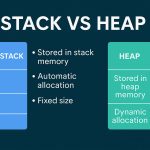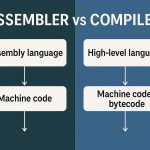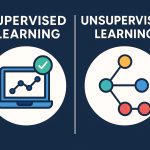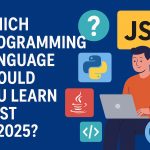Description
Chatbot Development refers to the process of designing, implementing, and deploying conversational agents—software applications that simulate human-like dialogue through text or voice interfaces. Chatbots are commonly used in customer service, sales, education, healthcare, and personal productivity.
Chatbots range from simple rule-based systems that follow predefined scripts to advanced AI-powered agents capable of understanding natural language, managing dialogue, accessing APIs, and learning over time. Development involves multiple disciplines, including natural language processing (NLP), dialogue management, machine learning, and software engineering.
How It Works
Chatbot systems typically follow a modular pipeline architecture consisting of several interconnected components:
1. Input Handling
- Accepts user messages from various channels (web chat, SMS, voice, WhatsApp, Slack, etc.).
- May include speech-to-text (STT) for voice input.
2. Natural Language Understanding (NLU)
- Parses and interprets user input.
- Extracts:
- Intent (user’s goal, e.g., “Book a flight”)
- Entities (parameters like “Istanbul”, “tomorrow”)
- Powered by models such as:
- Decision Trees
- Logistic Regression
- Transformer-based models (e.g., BERT)
3. Dialogue Management
- Maintains the state of the conversation.
- Decides what to do next:
- Ask for missing info
- Retrieve data
- Trigger an action
- End the session
Can be:
- Finite State Machines (FSMs)
- Frame-based (slot filling)
- Policy-based (reinforcement learning)
4. Natural Language Generation (NLG)
- Converts internal responses or data into natural-sounding replies.
- May use:
- Templates (
"Hello {name}, how can I help?") - Rule-based systems
- Neural text generators
- Templates (
5. Backend Integration
- Connects to external APIs, CRMs, databases, or webhooks.
- Enables transactional chatbots to perform real-world tasks (e.g., booking, ordering, retrieving account data).
6. Output Delivery
- Sends generated responses back to the user.
- May include text, images, buttons, or synthesized speech (TTS).
Types of Chatbots
| Type | Description | Examples |
|---|---|---|
| Rule-Based | Uses scripts, patterns, or decision trees | IVR menus, simple FAQs |
| Retrieval-Based | Selects best response from predefined options | Customer support agents |
| Generative (AI) | Uses neural networks to generate responses | GPT-style chatbots |
| Hybrid | Combines scripted logic with AI models | Enterprise virtual agents |
| Voice Bots | Integrates with STT and TTS systems | Alexa, Google Assistant |
Use Cases
💬 Customer Support
- Handle common queries like delivery status, password resets, and billing issues.
🧠 Personal Assistants
- Scheduling, reminders, weather updates, Q&A (e.g., Siri, Google Assistant).
🏥 Healthcare
- Appointment scheduling, symptom checking, and follow-up instructions.
💼 HR & Internal Tools
- Onboarding, leave requests, FAQ automation for employees.
🛒 E-commerce
- Product recommendations, shopping assistance, order tracking.
Platforms and Frameworks
| Tool / Framework | Description |
|---|---|
| Rasa | Open-source NLU + dialogue management |
| Dialogflow | Google’s NLP-powered conversational platform |
| Microsoft Bot Framework | Rich SDK for multi-channel bots |
| IBM Watson Assistant | Visual builder with analytics |
| Botpress | Developer-friendly open-source framework |
| ChatGPT API | Generative chat using OpenAI models |
Benefits and Limitations
✅ Benefits
- 24/7 Availability: No downtime or sleep.
- Scalable: Handles thousands of conversations in parallel.
- Cost Reduction: Cuts down need for human agents.
- Consistent Answers: Reduces variability in support quality.
- Data Collection: Gathers structured feedback and insights.
❌ Limitations
- Misunderstandings: NLU errors lead to irrelevant or confusing replies.
- Limited Context Awareness: Most bots struggle with long-term memory or emotional nuance.
- Cold Interaction: Users may prefer human empathy.
- Maintenance Overhead: Scripts and models need updates as business evolves.
Best Practices in Chatbot Development
- Define a Clear Use Case
Start small. Don’t aim to create a chatbot that “does everything.” - Design Conversation Flows
Use flowcharts or state diagrams. Anticipate user paths. - Incorporate Fallbacks
E.g., “I didn’t understand that. Can you rephrase?” - Log and Improve
Use analytics to detect dead ends and retrain the NLU. - Enable Human Escalation
Allow transfer to a live agent when needed. - Personalize Responses
Use names, history, and preferences where available. - Multi-turn Memory
Maintain context across multiple user messages.
Tools for NLU and Dialogue
| Component | Tools / Libraries |
|---|---|
| Tokenization | spaCy, NLTK, Hugging Face Transformers |
| Intent Classification | scikit-learn, BERT, Rasa NLU |
| Entity Recognition | spaCy, Duckling, Regex, Rasa NLU |
| Dialogue Manager | Rasa Core, Microsoft Bot Framework |
| NLG | GPT, T5, DialoGPT, template engines |
Real-World Analogy
Think of chatbot development like building a hotel concierge.
- Rule-based bots are like handing out FAQ brochures.
- Retrieval bots are like staff with quick scripts.
- Generative bots are like fluent, free-speaking concierges with encyclopedic knowledge.
The better your concierge understands your guests (users), the more useful and enjoyable the interaction becomes.
Example: Simple Retrieval-Based Bot in Python
user_input = input("You: ").lower()
responses = {
"hi": "Hello! How can I help you?",
"bye": "Goodbye!",
"what's your name": "I'm your friendly chatbot."
}
response = responses.get(user_input, "Sorry, I didn’t understand that.")
print("Bot:", response)Key Formulas Summary
While chatbot development is mostly engineering-focused, some ML formulas include:
- Softmax for Intent Classification
P(yᵢ | x) = exp(zᵢ) / ∑ exp(zⱼ) - Cross-Entropy Loss for Training Classifiers
L = -∑ yᵢ log(pᵢ) - BLEU / ROUGE for NLG Evaluation
Score the overlap between generated and reference responses - F1 Score for Entity Recognition
F1 = 2 · (precision · recall) / (precision + recall)
Related Keywords
- Context Aware AI
- Dialogue Management
- Entity Recognition
- Intent Classification
- Multimodal Interface
- Natural Language Generation
- Natural Language Understanding
- Retrieval-Based Model
- Rule-Based Bot
- Virtual Assistant









